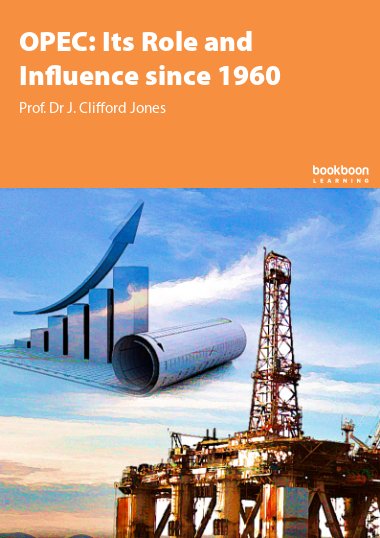My position in writing this book is that of an expert in matters relating to oil who is attempting to evaluate the role of OPEC over the 54 years of since it was set up at the first OPEC conference in Baghdad. There is a great deal of literature on OPEC, so an endeavour to describe its ‘role and influence’ in a book on the scale of this one might appear difficult to justify.
This book is a synthesis of carefully selected information on OPEC, a major essay in which the activity of OPEC since its beginning in 1960 is reviewed. Such matters as production quotas and the OPEC basket price loom large and I have tried to put the material together in a way which makes for continuity of theme. This, as already stated, has involved careful selection of documents and literature on OPEC. At least such information and documents are readily available in these days of the internet: the book would have taken much longer to write in the days of libraries stocked with hard copies. By the same token, the abundance of material now available electronically requires that an author drawing on electronic sources be discriminating.
The OPEC conferences feature throughout the book, and there is often more than one of these in a year. Information relating to such matters as production quotas, production levels and exports is often reported on a quarterly basis. Throughout the book I have tended (although there are some exceptions) to date events by the year only so as to avoid unnecessary detail.
More than once whilst obtaining information from the web in the writing of this book I have encountered a comment to the effect that information on production by particular countries and on production quotas sometimes differs from one source to another. This is certainly the case, and is the reason I have almost always backed up such information in this book with a reference so that a reader can at least examine for him or herself the sources I have (usually arbitrarily) chosen.
This book is not an introduction to OPEC. It is an advanced treatise directed at experts already having knowledge of and insights into such things. Even so it might serve as a confidence builder for someone new to the subject area wanting subsequently to tackle the more detailed and specialised books and articles about OPEC.
J.C. Jones.

